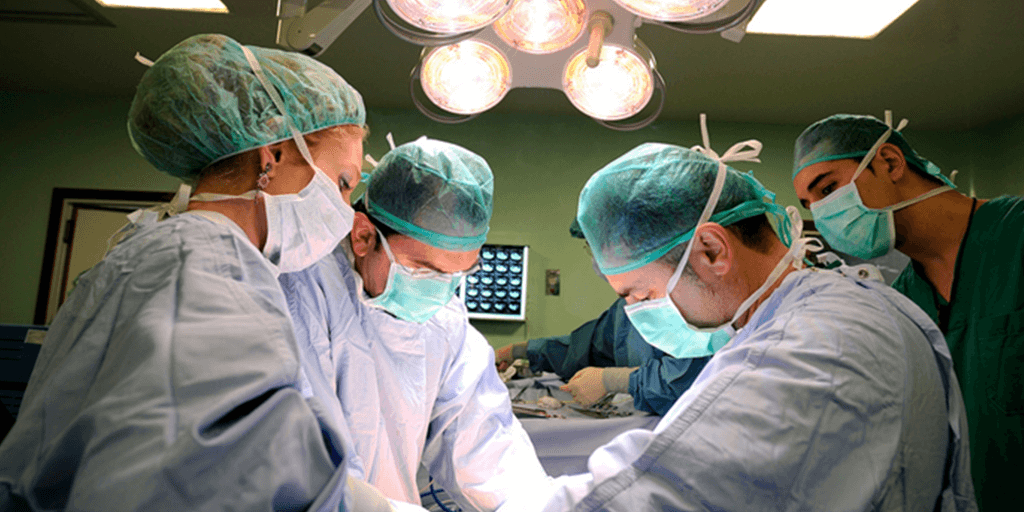
In the dynamic healthcare environment, the maintenance of medical equipment is vital to ensuring the well-being of patients and the efficiency of hospital operations.
Traditional preventative maintenance practices can be costly and time-consuming, often leading hospitals to explore alternative approaches.
The Alternative Equipment Maintenance (AEM) program was created for those hospitals that intend to deviate from the equipment manufacturer's recommendations.
Within this article, we will explain,
What is alternative equipment maintenance?
Benefits of alternative equipment maintenance
How to identify potential AEM equipment
How to implement an AEM program
What is Alternative Equipment Maintenance?
Alternative equipment maintenance is a data-driven and risk-based approach to maintaining medical equipment.
While traditional equipment maintenance involves a rigid, calendar-based routine maintenance program, AEM is more adaptive. Instead of performing maintenance on a set schedule, an AEM program considers equipment usage, performance history, maintenance logs, and any other additional data.
Using historical equipment data allows hospitals to identify patterns, predict potential issues, and better prioritize maintenance tasks.
With an AEM program, your maintenance plans are not set in stone.
Maintenance tasks that are predictive (using data to predict when maintenance is needed), preventive (routine maintenance), or corrective (addressing issues when they arise) will vary from machine to machine.
Benefits of Alternative Equipment Maintenance
While AEM requires a more involved, data-driven analysis of your equipment, the benefits from the upfront planning often outweigh the upfront investment.
Benefits from an AEM Program include:
Cost Reduction
AEM aims to reduce maintenance costs by avoiding excessive maintenance on equipment that does not require it and by focusing resources where they are most needed.
Financial benefits also result from AEM’s ability to improve equipment lifespan, cutting the costs of replacing faulty equipment.
Improved maintenance planning allows healthcare facilities to better allocate resources to where they are needed most. By doing so, AEM cuts down on unnecessary expenditures.
Improved Equipment Lifespan
The data-driven nature of AEM allows healthcare facilities to predict and prevent issues before they result in equipment failure.
Small, preventable problems can escalate into major failures that can cause permanent damage to a medical gas system. A properly implemented AEM program can prevent small issues from evolving into complete equipment replacement.
AEM focuses on intelligent, proactive maintenance to increase the lifespan of your equipment.
Increased Equipment Uptime
When equipment malfunctions or fails, it can lead to significant downtime, which negatively affects facilities operations and bottom line, and most importantly, patient safety.
Downtime related to equipment issues can be incredibly costly. A study that analyzed the costs of operating rooms in 2014 found an operating room costs 36 dollars per minute. As this study was performed nearly a decade ago, you can assume that today’s actual cost is much higher.
AEM’s focus on predictive and preventative maintenance helps reduce downtime to keep equipment operational for longer periods of time.
Minimize Risk to Patients and Staff
Alternate Equipment Management programs minimize risk to patients and others in the hospital.
According to CMS,
"Hospitals that choose to employ alternate maintenance activities and schedules must develop, implement, and maintain a documented AEM program to minimize risks to patients and others in the hospital associated with the use of a facility or medical equipment."
With an AEM program, critical equipment, such as ventilators, defibrillators, and anesthesia equipment, are more efficiently maintained, contributing to patient and staff safety in routine or emergency care.
How to Identify Potential AEM Equipment
To identify if the equipment is eligible to be placed on an AEM program requires assessing the equipment’s characteristics and compliance with regulatory guidelines from agencies such as The Joint Commission (TJC) and Centers for Medicare & Medicaid Services (CMS).
Equipment not eligible for AEM
Per the CMS, equipment is not eligible for an AEM if:
- Other Federal or state law; or hospital Conditions of Participation (CoPs) require adherence to manufacturer’s recommendations and/or set specific requirements. For example, all imaging/radiologic equipment must be maintained per manufacturer’s recommendations; or
- The equipment is a medical laser device; or
- New equipment without a sufficient amount of maintenance history has been acquired.
- Hospitals electing to adjust facility or medical equipment maintenance must develop policies and procedures and maintain documentation supporting their Alternate Equipment Management (AEM) program. They must adhere strictly to the AEM activities and/or frequencies they establish. (source)
Per the TJC, equipment is not eligible for an AEM if:
- Equipment subject to federal or state law or Medicare Conditions of Participation
- Imaging and radiologic equipment (diagnostic or therapeutic)
- Medical LASER devices
- New medical equipment with insufficient maintenance history to support the use of an AEM strategy (source)
Risk and Safety Requirements
Healthcare facilities that are identifying potential equipment for an AEM program must first identify if they meet the necessary risk and safety requirements set forth by The Joint Commission (TJC) and Centers for Medicare & Medicaid Services (CMS).
Additional Information: When evaluating whether equipment is eligible for an AEM, a risk assessment should be performed. For an in-depth explanation and example of a risk assessment, view CHT’s blog: How to Identify and Analyze with a Hospital Risk Assessment.
CMS states,
“A hospital is expected to identify any equipment in its AEM program which is “critical equipment,” i.e., biomedical or physical plant equipment for which there is a risk of serious injury or death to a patient or staff person should the equipment fail.” (source)
TJC identifies high-risk equipment as anything that would put a patient or staff member at risk of serious injury or death should the equipment fail.
The Joint Commission uses the term ‘high-risk’ whereas CMS uses the term ‘critical,’ but the definitions are identical,” says Matthew Baretich, P.E., Ph.D., president of Baretich Engineering Inc. in Fort Collins, Colorado.
As healthcare managers, we hear and use the terms interchangeably. A clarification from TJC, "The hospital identifies high-risk medical equipment on the inventory for which there is a risk of serious injury or death to a patient or staff member should the equipment fail".
Inventory Requirements
A complete inventory of equipment is required to meet the patient's needs and present/create no risk to the patient's safety when an AEM program is followed. The strategies of an AEM program must not reduce the safety of equipment and must be based on accepted standards of practice, regardless of whether it is maintained according to manufacturer recommendations or is in an AEM program. (source)
Hospitals must identify critical equipment and must identify AEM equipment. With the clarification from CMS, equipment falls into those eligible for alternate maintenance and those that must strictly adhere to its manufacturer's recommendations.
TJC requires hospitals to identify high-risk operating components and requires hospitals to identify AEM operating components.
Regulations surrounding AEM
The Centers for Medicare & Medicaid Services (CMS) clarified when a critical access hospital may implement an alternative equipment maintenance program, which "adjusts maintenance, inspection, and testing activities for facility and medical equipment from what is recommended by the manufacturer."
To align with these expectations, The Joint Commission developed and revised several elements of performance for critical access hospitals.
Maintenance of 'Critical,' 'High-Risk,' and AEM Equipment
The goal of the Environment of Care (EOC) program aims to provide a safe and fully functioning environment for patients, staff, and visitors. There are 7 areas included under the EOC, one being medical equipment.
The standard EC.02.04.03 requires that critical access hospitals to inspect, test, and maintain medical equipment.
According to Elements of Performance for EC.02.04.03,
Before initial use and after major repairs or upgrades of medical equipment on the medical equipment inventory, the critical access hospital performs safety, operational, and functional checks.
How to Implement an AEM Program
Implementing an AEP program requires careful planning, adherence to regulations and standards, and an ongoing commitment to maintaining healthcare equipment safety and quality.
Implementing an AEM program includes
- Identifying eligible equipment,
- Reviewing guidelines,
- Defining maintenance procedures,
- Incorporating the AEM program into emergency plans, and
- Periodically reviewing the AEM program.
Often, implementing AEM requires coordination between clinical, engineering, and regulatory teams.
The most important part of implementing an AEM program was left off the list above; partnering with a team of medical equipment experts that you can trust and depend on.
This ensures that your facility maintains compliance and is able to maximize the benefits of an AEM program.
Documenting the Process
If a healthcare facility chooses an Alternative Equipment Maintenance program, there is still a requirement to document the purchase, installation, regular inspection, testing, and any failures or repairs made to the equipment.
Further, the program needs to explain in writing why the alternative program justifies deviating from the manufacturer's suggested schedule of routine maintenance based on performance history in-house or across the industry of similar users.
'Critical' medical equipment repairs and adjustments are strongly suggested to be made by technicians certified by ASSE and following NFPA 99-2012 guidelines. As part of the record-keeping, machine manuals, and critical operating values need to be accessible.
Luckily, software like Vitaleyez™ automates medical gas compliance while delivering critical decision-making data, allowing you to effectively communicate with inspectors and decision-makers about the state of your facility and equipment.
Conclusion
Alternative equipment maintenance programs can be used to replace traditional maintenance practices with a data-driven, risk-based approach that prioritizes safety, efficiency, and cost-effectiveness.
If you are interested in AEM, CHT has experienced techs that can help you at a moment's notice.
They bring with them Vitaleyez compliance software that can help ensure your facility's adherence to regulatory requirements. Vitaleyez preventative maintenance software can keep the records for an AEM program, ensuring that your facility remains compliant.
photo credit: critical hospital




